The University of Scranton begins its 125th Anniversary celebration this month with a special mass on August 12. We know all true Royals take pride in the long history of the University of Scranton — but just in case your memory is a bit fuzzy, here’s a quick pictorial primer on the story behind our 1888 cornerstone, featuring materials from the University Archives and Digital Collections.
The University of Scranton was founded in 1888 by Most Reverend William G. O’Hara, D.D., the first Bishop of Scranton, as the College of St. Thomas of Aquin.

On August 12, 1888, Bishop O’Hara laid and blessed the cornerstone of the College’s first building, which would stand next to St. Peter’s Cathedral and the Bishop’s residence on Wyoming Avenue. The laying of the cornerstone was a major, city-wide celebration. The Bishop sent out invitations:
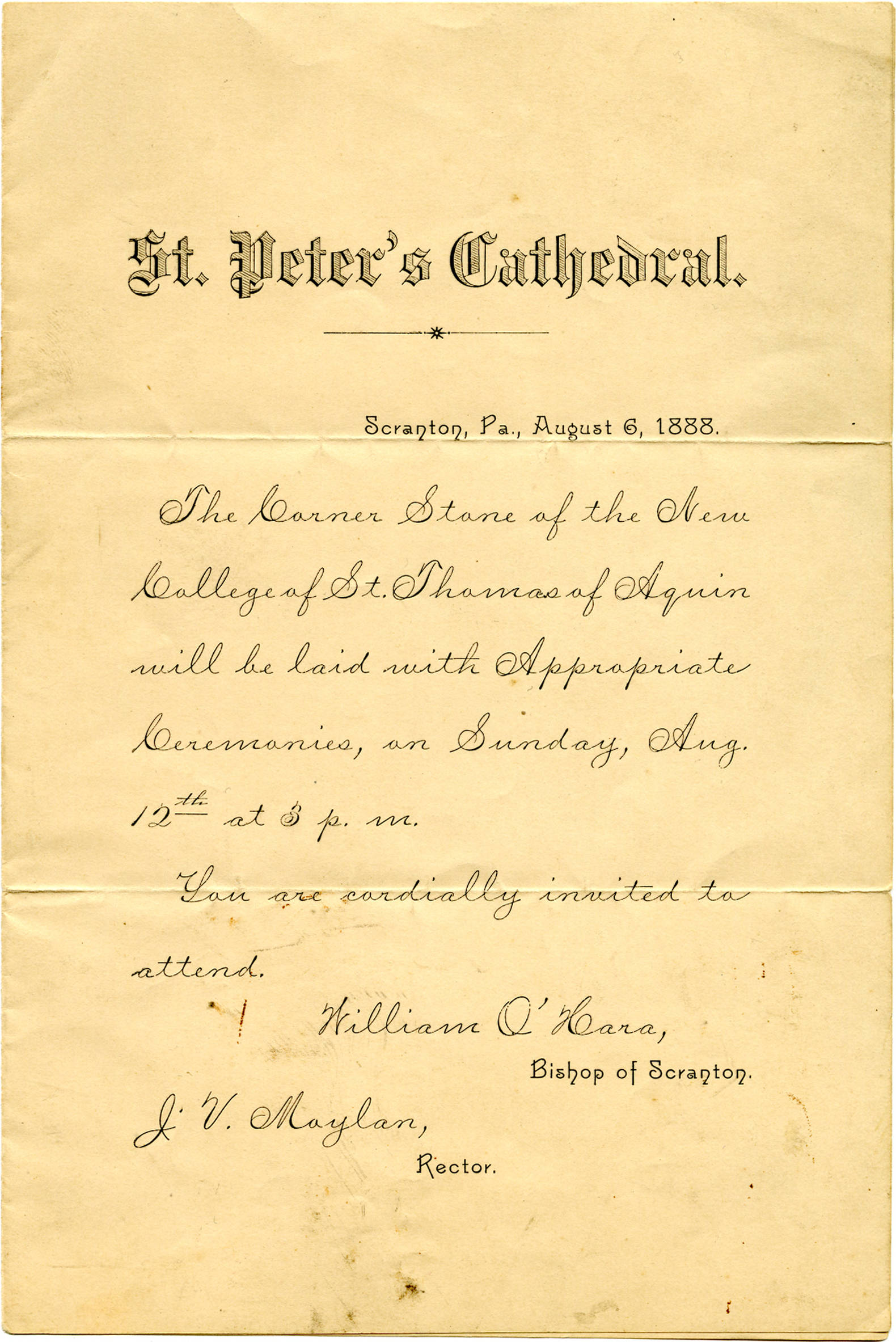
The Catholics of Northeastern Pennsylvania responded with enthusiasm. Four packed trains brought attendees from Wilkes-Barre and Carbondale, who joined the people of Scranton in an “immense throng” on Wyoming Avenue. At 2:30pm, community organizations and societies gathered at the corner of Franklin and Lackawanna Avenues and paraded to the Cathedral, carrying banners and (in some cases) bringing along a band. The Scranton Republican noted that “the parade was not a large one, but it made an excellent approach.”
The ceremony began at 3pm, as Bishop O’Hara and several priests, cross-bearers, and acolytes processed from the Cathedral to the cornerstone, accompanied by the Cathedral choir and an orchestra performing Mozart’s Gloria. Bishop O’Hara blessed the cornerstone, placed at the foundation of the planned College building. The granite stone (in a “much admired pink hue”) was inscribed with the College’s name and the date:
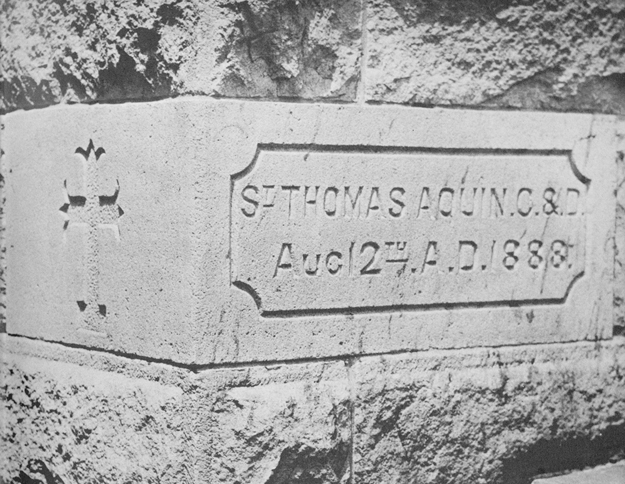
Inside the cornerstone was placed a copper box, which held:
- Seven silver coins, fresh from the U.S. Mint, including a rare 3-cent piece
- That day’s issues of local newspapers (including the Scranton Times, the Scranton Republican, the Free Press, News, and the Catholic Record, along with the Catholic Standard of Philadelphia)
- A record of the blessing, in Latin
Bishop O’Hara then gave a sermon, noting that “God gives His grace to all works that are given in his name.” He charged the attendees with the care and support of the College: “It is for you to put your shoulder to the wheel and to see this institution of learning rising up… [do] not think of educating your children according to the fashions of the world, but to train their minds and impress upon their hearts the great truths of religion and to point out to them the way in which they should walk.” The following day, local newspapers published the text of the sermon along with detailed reports of the event:
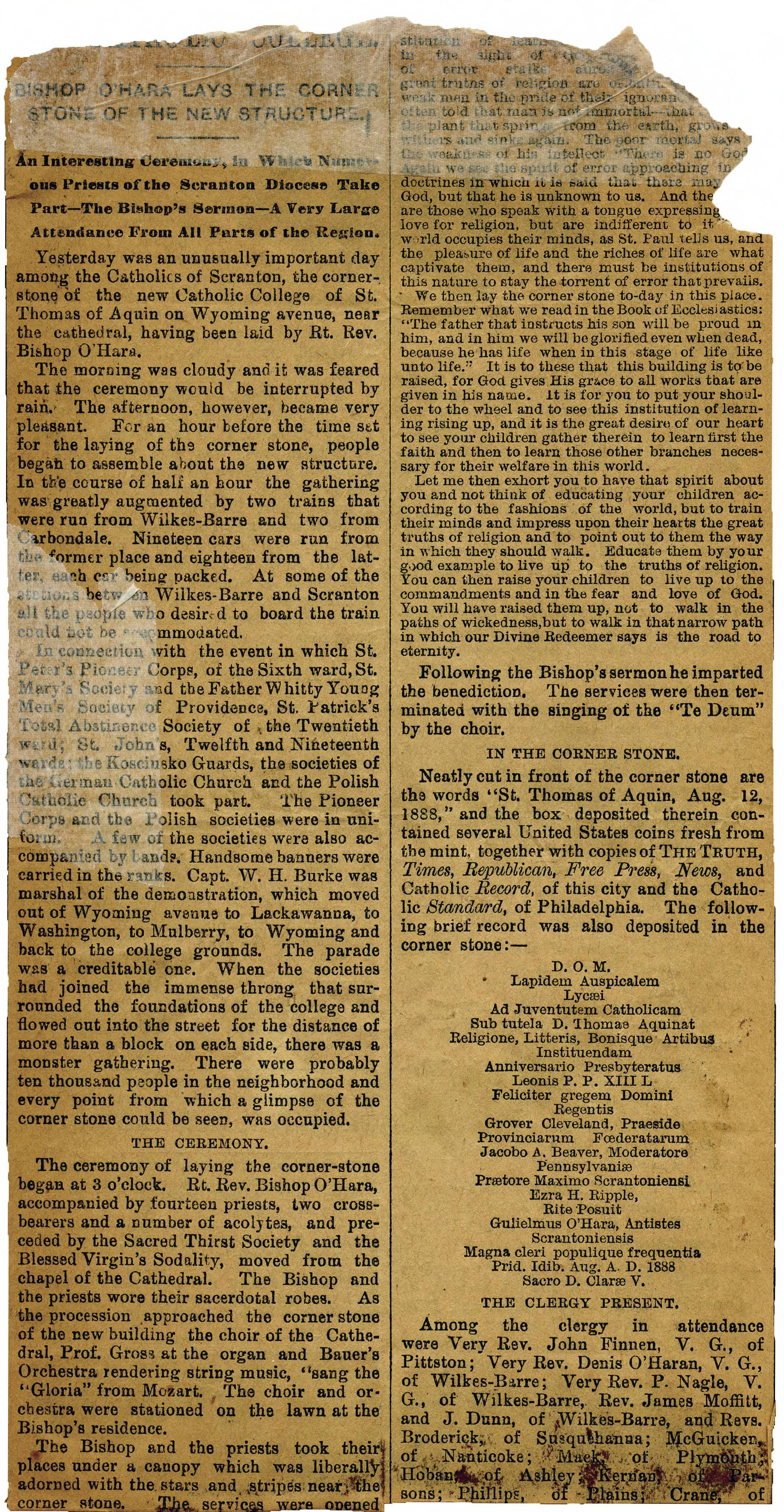
Bishop O’Hara’s plans came to fruition in 1892, when the construction of College Hall (later known as “Old Main”) was completed and St. Thomas College opened its doors. The three story brick building housed classrooms on the first and second floors, an auditorium/gymnasium on the third floor, and a chapel in the basement:
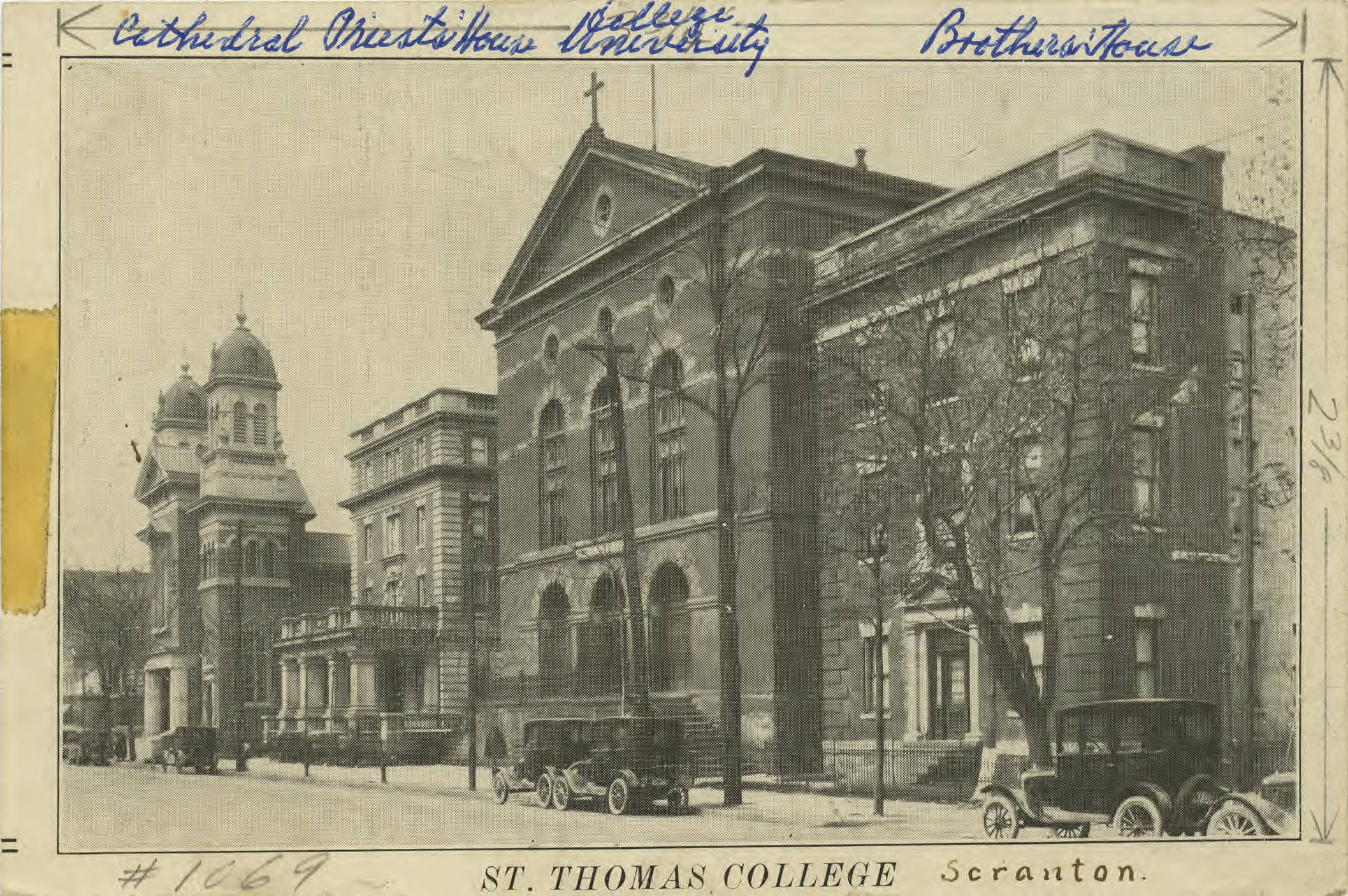
The cornerstone remained at the base of Old Main for more than 70 years. During that time, St. Thomas College evolved into the University of Scranton (changing its name in 1938), and the campus center shifted from Wyoming Avenue to the property surrounding the Scranton Estate, which Worthington Scranton donated to the University in 1941.
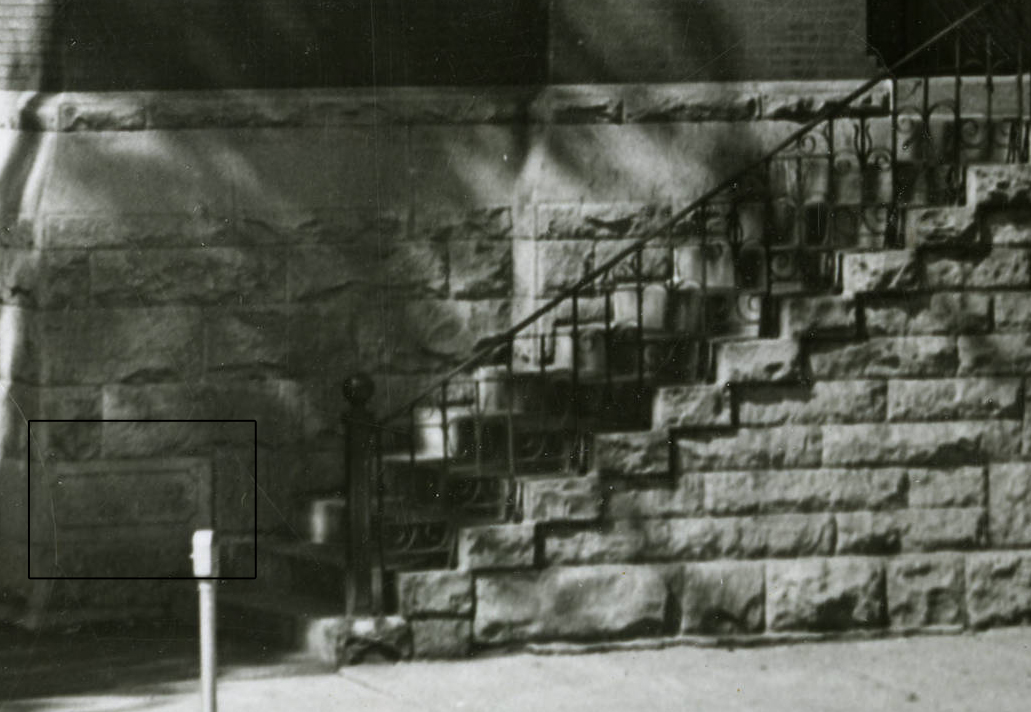
In 1962, the University formalized this shift by moving the cornerstone from Wyoming Avenue to the new campus. The cornerstone was carefully removed from Old Main (which would be demolished in 1968):
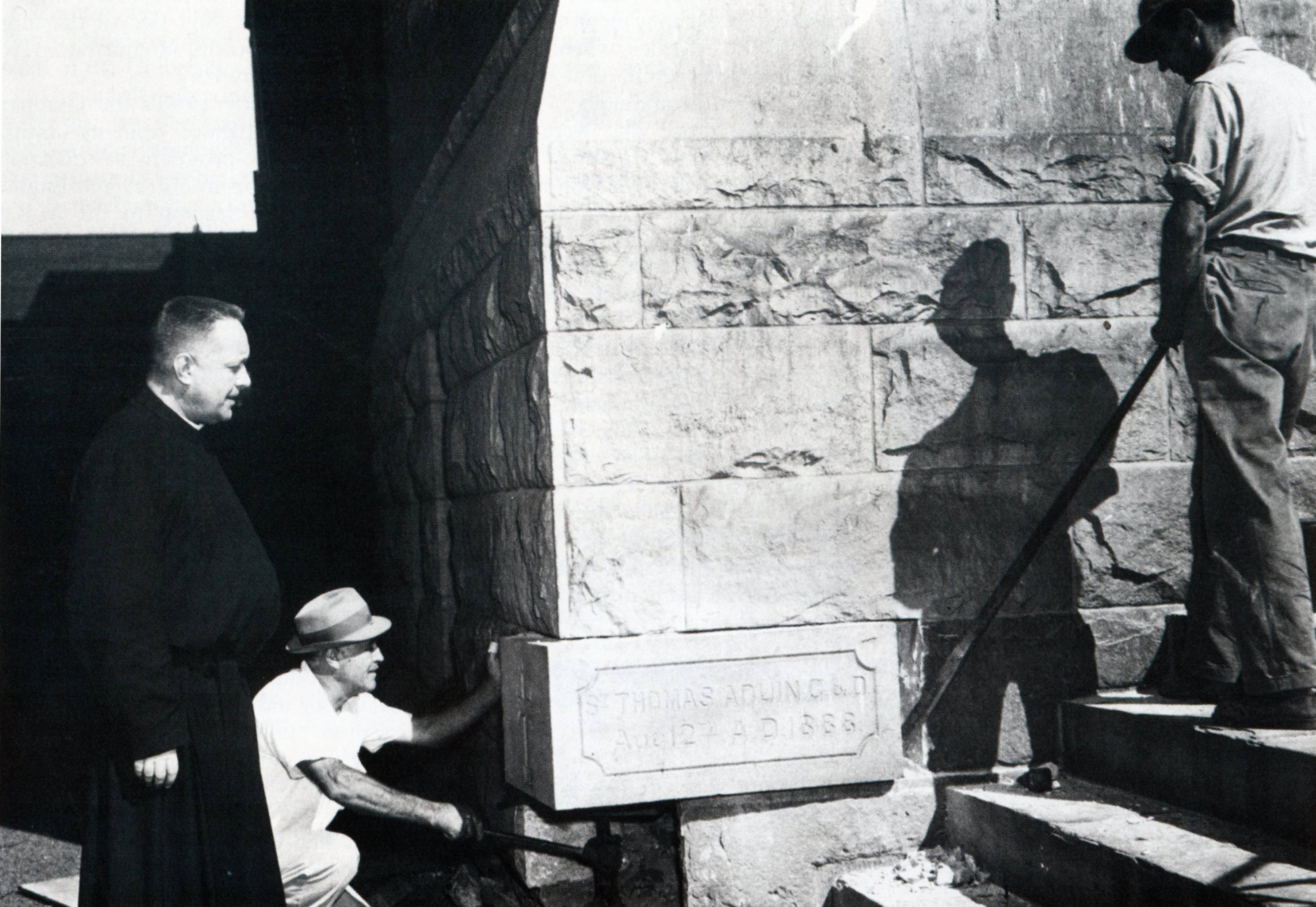
It was then transferred to the new campus, where a newly constructed classroom building — St. Thomas Hall — was about to be dedicated. The September 1962 issue of the Aquinas described the move:
The cornerstone was removed from St. Thomas College to perpetuate those things for which it stands. The intentions of the founding fathers and the service which its building has provided to higher education have all been carried with the stone to its new resting place beneath a new cornerstone in the walls of St. Thomas Hall.
No edifice is stronger than its foundation, and the foundation of St. Thomas Hall and the University is in the ‘Old Main’ building and St. Thomas College. This is symbolically represented by the old cornerstone providing a foundation for the new, as St. Thomas College provides a foundation for the present institution. Along with the stone, St. Thomas College has given its name to the largest building on the University campus, providing a continuity to the history of the school by linking its past with its present.
At the September 16, 1962 dedication of St. Thomas Hall, both the old and new cornerstones were blessed by Rt. Rev. Msgr. Joseph A. Madden, chancellor of the Diocese of Scranton. Msgr. Madden observed: “What we witnessed here today is but a step, though gigantic, towards fulfillment of a divine command… ‘Go, therefore and Teach!'”

A special guest at the dedication was Dr. Martin T. O’Malley, who at the age of 12 had served as an altar boy at the 1888 dedication. He was the only person to be present at both the 1888 and 1962 events.
The contents of the 1888 cornerstone were removed before it was installed; the original silver coins and the copper box went into other storage for safe keeping. It’s a little unclear from the 1962 accounts of the dedication, but it seems that the original 1888 newspapers were placed into the 1962 cornerstone, along with:
- A letter from Robert P. Moran ’25, the architect of St. Thomas Hall, addressed to the future architect of any building that replaced it
- A letter from 1962 student body president Jacques P. Kueny
- A letter from Atty. James A. Kelly, president of the Alumni Society
- A letter from Dr. Frank J. O’Hara, director of alumni relations, to alumni of the future
- Bulletins from the Graduate School, the College of Arts and Sciences, and the Evening College
- The latest issues of the Alumni Bulletin
- Promotional materials from a recent development campaign
- A pictorial booklet
- Copies of student publications
- A list of student names for the 1961-1962 academic year
- New issues of local newspapers from the day of the 1962 dedication
- Three medals
- New coins of each denomination
Both the 1888 and 1962 cornerstones were placed at the Linden Street entrance of the new building, which at the time was a very prominent location. Over the years, though, it proved to be a less than ideal spot in terms of cornerstone visibility, with bushes and eventually a tree hiding the stones from direct view:
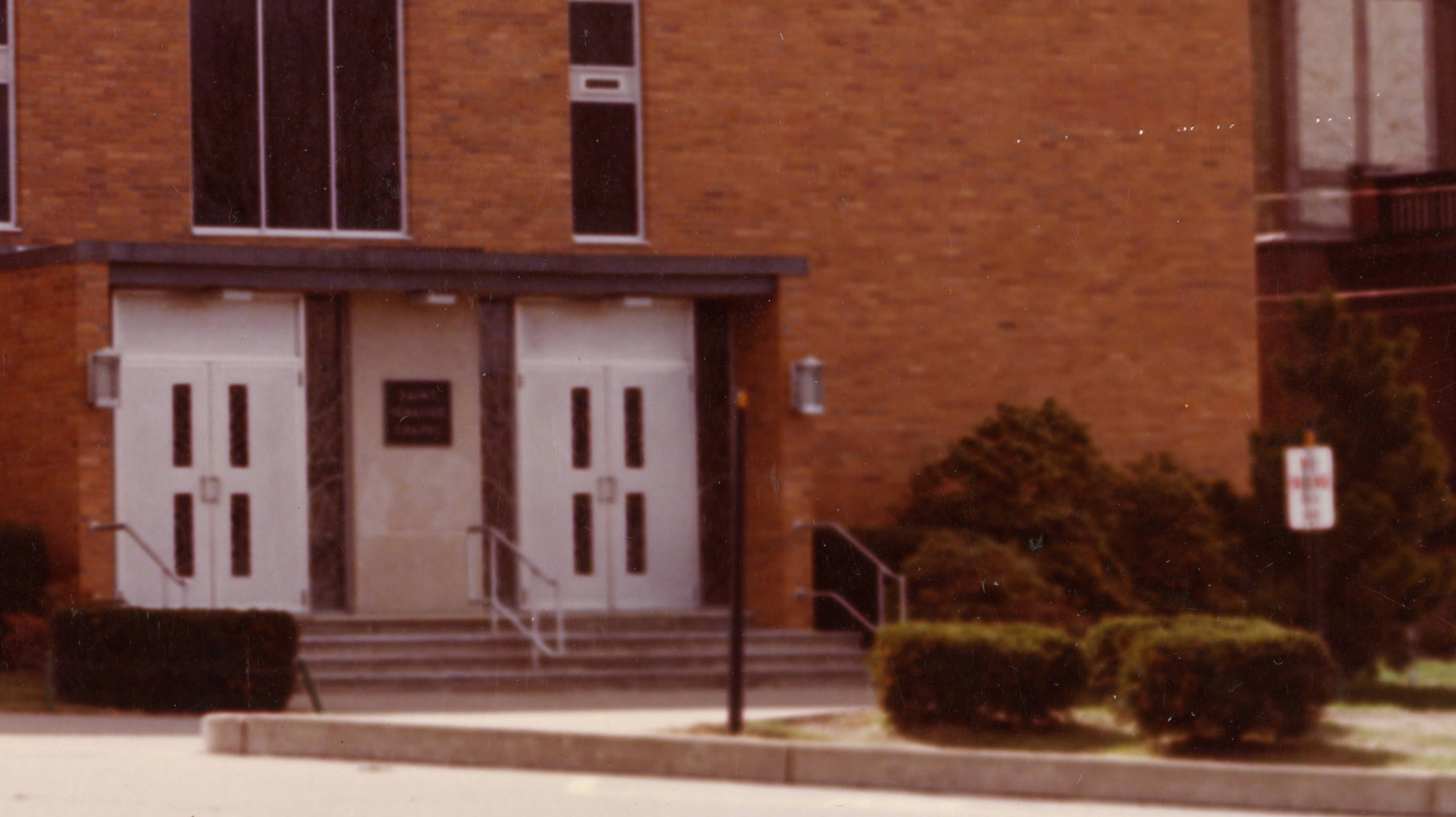
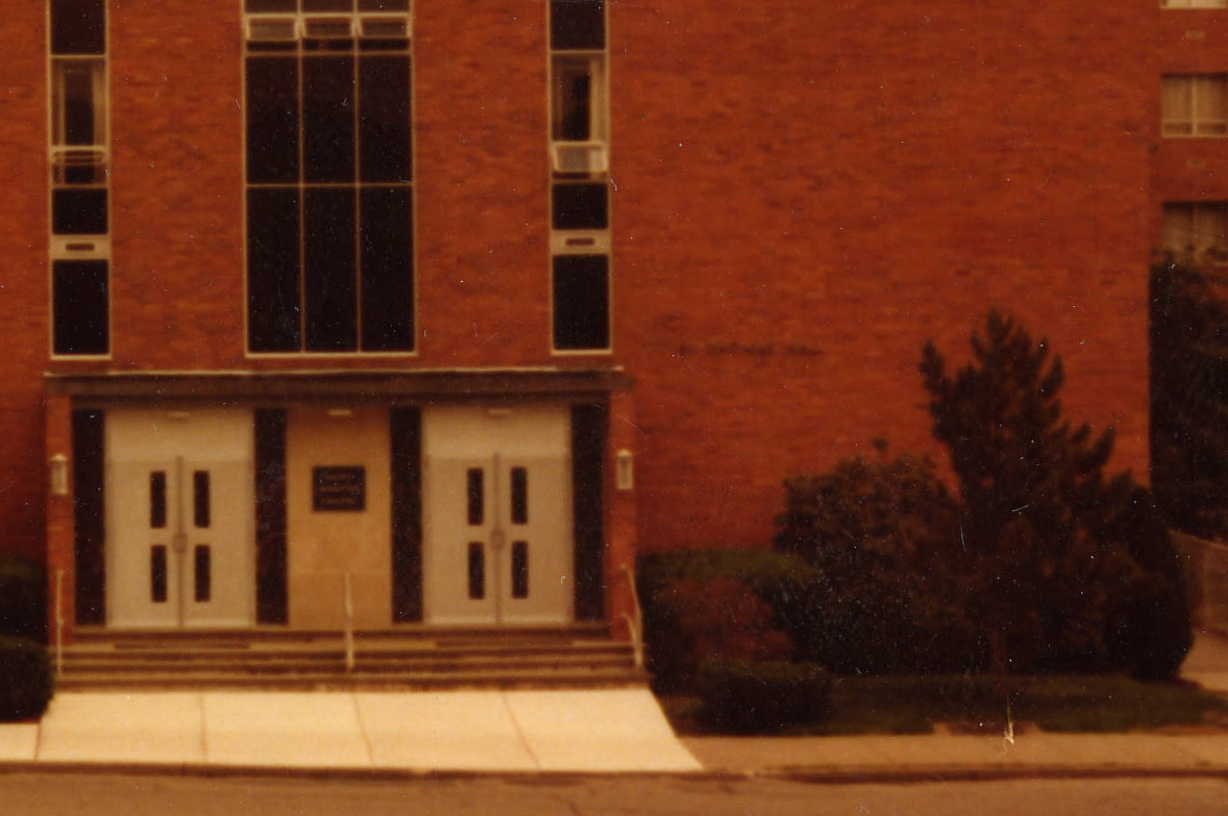
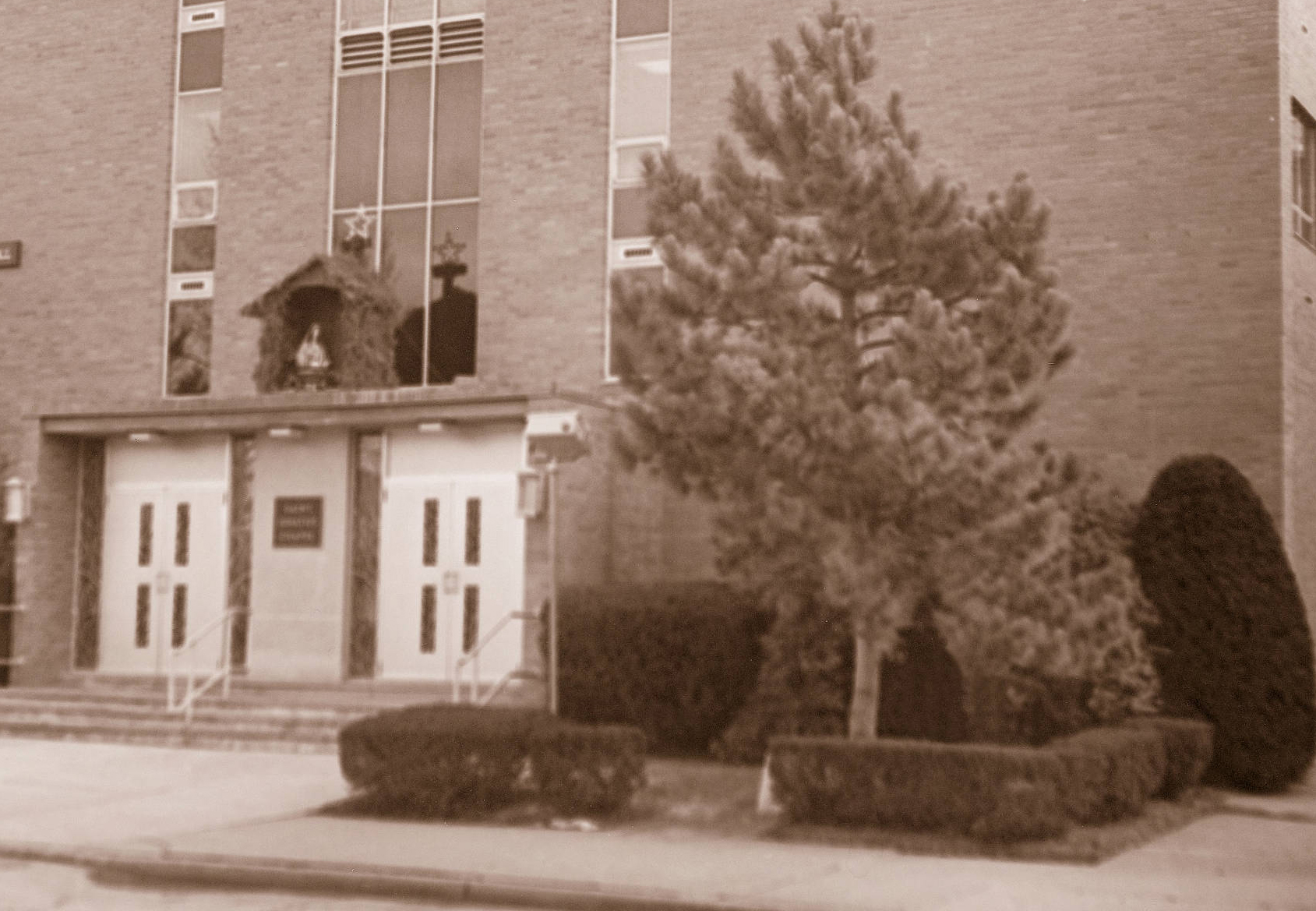

As part of the 125th Anniversary, the 1888 cornerstone has been dislodged from its 1962 placement and will be on display – location TBA – throughout the celebration. Keep an eye out for it, and be sure to take the opportunity to pay your respects to Bishop O’Hara and the University’s 125-year-old granite foundation.

